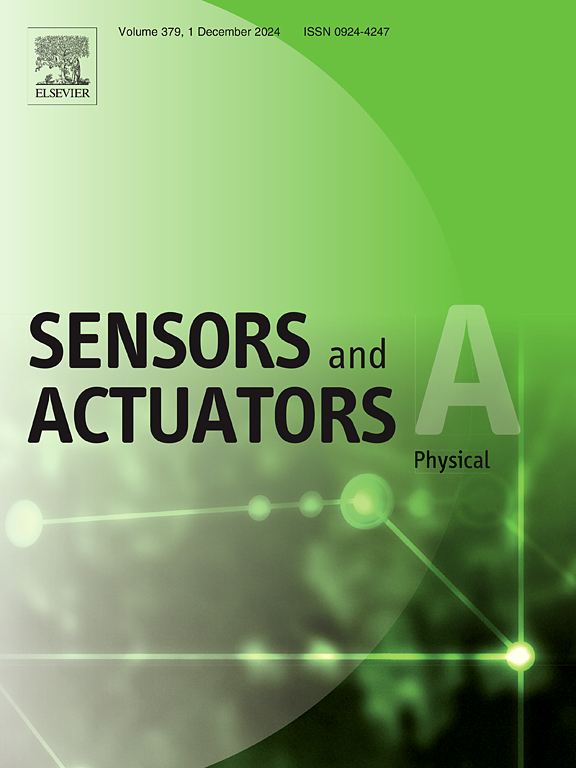Microfluidic device with three-dimensional microtip electrodes for efficient capture and concentration of bacteria-sized microparticles using dielectrophoresis
IF 4.1
3区 工程技术
Q2 ENGINEERING, ELECTRICAL & ELECTRONIC
引用次数: 0
Abstract
Microfluidics-based systems have gained considerable attention in the lab-on-chip field owing to their ability to separate, concentrate, and analyze microparticles. Concentrating microparticles is crucial for the high-sensitivity measurement of biomarkers in the analysis of cells or bacteria. This study presents a microfluidic chip using dielectrophoresis (DEP) to capture bacterial microparticles. The chip features a vertically arranged microtip electrode and an indium tin oxide (ITO) electrode, enhancing the electric field concentration effect and enabling optical analysis of the collected particles. The device was designed and fabricated using microfabrication techniques that incorporate a patterned array of microtip electrodes on a polydimethylsiloxane (PDMS) substrate. Experimental studies and numerical simulations were conducted to evaluate the device performance. The fabricated device was applied to the concentration of fluorescent beads with various variables such as particle size, frequency, voltage, and flow rate. The experimental results demonstrated the successful trapping and concentration of microparticles using DEP forces. The recovery rates of the 2.29 µm and 4.42 µm PS beads, when introduced at a flow rate of 1 μL/min and subjected to an applied alternating current (AC) voltage of 200 kHz and 10 Vpp at the microtip electrode, were measured to be 85.50±2.69 % and 91.83±0.63 %, respectively. Additionally, to assess the applicability of the microtip electrode-based DEP device proposed here for bacteria concentration, capture experiments were conducted using Escherichia coli, demonstrating a recovery rate performance of 77.93±7.31 %. These findings highlight the potential of the proposed microfluidic chip for the concentration and measurement of bacteria, such as E. coli.
利用介电泳技术高效捕获和浓缩细菌大小微粒的三维微尖电极微流体装置
基于微流控技术的系统能够分离、浓缩和分析微颗粒,因此在片上实验室领域备受关注。在分析细胞或细菌时,浓缩微颗粒对于高灵敏度测量生物标记物至关重要。本研究介绍了一种利用介电泳(DEP)捕获细菌微颗粒的微流体芯片。该芯片采用垂直排列的微尖电极和氧化铟锡(ITO)电极,增强了电场集聚效应,可对收集到的微粒进行光学分析。该装置的设计和制造采用了微加工技术,在聚二甲基硅氧烷(PDMS)基底上集成了图案化的微尖电极阵列。为评估该装置的性能,进行了实验研究和数值模拟。所制造的装置被应用于荧光珠的浓缩,其中包含各种变量,如粒度、频率、电压和流速。实验结果表明,利用 DEP 力能成功捕获和浓缩微颗粒。当以 1 μL/min 的流速引入 2.29 µm 和 4.42 µm 的 PS 粒子,并在微尖电极上施加 200 kHz 和 10 Vpp 的交流电压时,测得的回收率分别为 85.50±2.69 % 和 91.83±0.63%。此外,为了评估本文提出的基于微尖电极的 DEP 设备在细菌浓缩方面的适用性,还使用大肠杆菌进行了捕获实验,结果表明回收率为 77.93±7.31%。这些发现凸显了所提出的微流控芯片在细菌(如大肠杆菌)浓缩和测量方面的潜力。
本文章由计算机程序翻译,如有差异,请以英文原文为准。
求助全文
约1分钟内获得全文
求助全文
来源期刊

Sensors and Actuators A-physical
工程技术-工程:电子与电气
CiteScore
8.10
自引率
6.50%
发文量
630
审稿时长
49 days
期刊介绍:
Sensors and Actuators A: Physical brings together multidisciplinary interests in one journal entirely devoted to disseminating information on all aspects of research and development of solid-state devices for transducing physical signals. Sensors and Actuators A: Physical regularly publishes original papers, letters to the Editors and from time to time invited review articles within the following device areas:
• Fundamentals and Physics, such as: classification of effects, physical effects, measurement theory, modelling of sensors, measurement standards, measurement errors, units and constants, time and frequency measurement. Modeling papers should bring new modeling techniques to the field and be supported by experimental results.
• Materials and their Processing, such as: piezoelectric materials, polymers, metal oxides, III-V and II-VI semiconductors, thick and thin films, optical glass fibres, amorphous, polycrystalline and monocrystalline silicon.
• Optoelectronic sensors, such as: photovoltaic diodes, photoconductors, photodiodes, phototransistors, positron-sensitive photodetectors, optoisolators, photodiode arrays, charge-coupled devices, light-emitting diodes, injection lasers and liquid-crystal displays.
• Mechanical sensors, such as: metallic, thin-film and semiconductor strain gauges, diffused silicon pressure sensors, silicon accelerometers, solid-state displacement transducers, piezo junction devices, piezoelectric field-effect transducers (PiFETs), tunnel-diode strain sensors, surface acoustic wave devices, silicon micromechanical switches, solid-state flow meters and electronic flow controllers.
Etc...
 求助内容:
求助内容: 应助结果提醒方式:
应助结果提醒方式:


